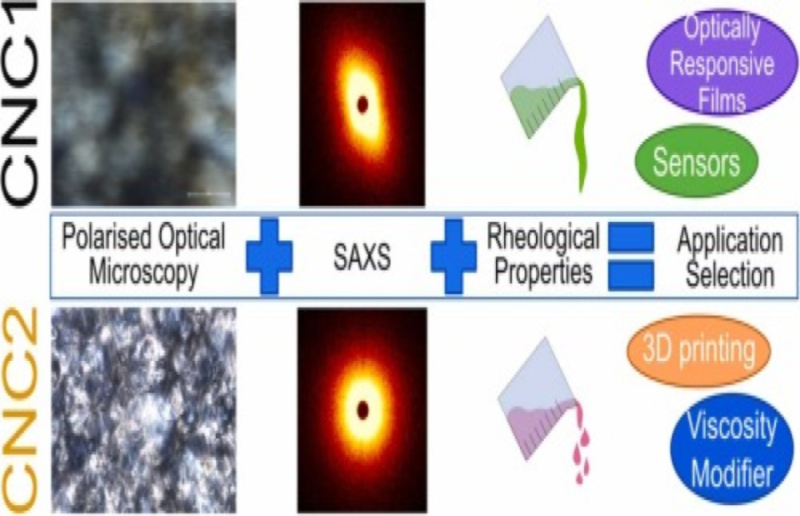BioPRIA latest work on “Characterisation of cellulose nanocrystals by rheology and small angle X-ray scattering (SAXS)” has been published in Colloids and Surfaces A: Physicochemical and Engineering Aspects. This study demonstrates that combining rheological and SAXS measurements can characterise a CNCs suitability for a desired application. Congratulations to authors: Christine Browne, Vikram Singh Raghuwanshi, Maoqi Lin, Gil Garnier and Warren Batchelor.
Abstract
Hypothesis
The combination of rheology and SAXS measurements can be used to great effect to effectively characterise and select the type of CNCs materials for a particular application.
Experiments
Two commercial sources of CNCs were characterised to investigate their potential applications. Polarised optical imaging, rheology and SAXS measurements were used to determine the structure and behaviour of the suspensions. We compared these to the more typical characterisation methods of TEM, AFM, DLS, conductometric titration and zeta potential.
Findings
CNC1 is smaller in length and dispersity than CNC2. Though CNC1 has a higher sulfur content, the zeta potential of both CNCs is similar. CNC1 formed more highly ordered structures including the chiral nematic phase. The gel point of CNC2 was lower than CNC1 and allowed more paste-like materials to be generated. This demonstrates CNC1 to be more suited to applications where highly ordered structures are vital, such as optical materials; CNC2 can be used when viscosity control is important, such as 3D printing. This highlights the need to effectively characterise CNCs prior to use to select the most appropriate properties for the desired applications.



